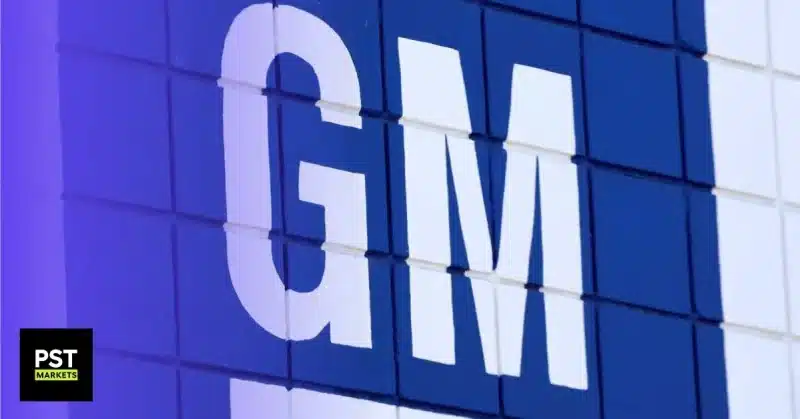General Motors took the market by surprise with a massive share buyback announcement. Now GM stock is up roughly 16% after announcing its $10 billion share buyback, but is this just a short-term boost for GM’s ailing stock or something more?
It seems like General Motors’ management team is pulling out all the stops in an attempt to win back investors and retain its shareholders. While the stock was down 18% year to date, GM’s massive share buyback and plans to increase its dividends starting in 2024, have pushed the stock back to its price level at the start of the year. But will this bid to win over investors yield a long-term recovery for the stock?
Find out how GM found its stock hitting the lowest point in five years and whether it can pull off its ambitious recovery plans.
GM’s buyback and dividends plans
After a long year of turmoil that has severely punished General Motors’ stock, the company finally offered its investors some relief.
General Motors announced plans to return significant capital to its shareholders via a $10 billion share buyback. This is extremely significant since the company’s market capitalization is about $40 billion, meaning that General Motors is basically buying back a quarter of the company.
Along with that, its planning to increase its quarterly dividend from 3 cents per share to 12 cents per share starting in January 2024. This 33% increase has caused many to speculate that the company’s price-to-earnings ratio could increase as well.
While its stock’s dividend yield will increase to about 1.7%, it’s still falling short of its competitor Ford, which boasts a dividend yield of about 5.8%. Unlike Ford, General Motors is known for preferring share buybacks to dividends. For example, General Motors repurchased a few billion dollars worth of shares while Ford repurchased less than a billion over the last few years.
This has affected Ford’s price-to-earnings multiple vis-à-vis General Motors and helps explain why Ford stock is trading at about 6 times its 2024 earnings estimates while GM is trading at 4.4 times its own estimates.
The UAW strike
This announcement came as welcome news to GM investors who have watched the company struggle with labor issues. These labor troubles started when the United Auto Workers union kicked off a strike that affected 13,000 workers at Detroit’s “Big Three” automakers: General Motors, Ford, and Stellantis. GM stock declined roughly 30% since the issues began at the the start of July before hitting its 5 year low mid-November.
During the strike, the union demanded a 40% increase in wages to match the 40% increase in the salaries of the three automakers’ CEOs. However, all three companies’ counter offers were promptly rejected.
While it was a tough time for all three automakers, General Motors came under particular scrutiny for its management’s response. For instance, GM’s CEO Mary Barra disputed the 40% raise in her salary, saying “I don’t know where the 40% came from.”
Additionally, the company’s president Mark Reuss called some of the union’s statements “misinformation” arguing that GM’s counter offer held the workers’ interests and the company’s interests in mind.
However, none of these remarks appeased the union which pushed forward with the strike. So, to avert disaster, General Motors agreed to a tentative deal to end the strike in November. The four-year deal consisted of a 25% hourly pay increase and higher cost-of-living allowances.
According to CEO Mary Barra, the new pay deal will cost the company $9.3 billion in total. This translates to an extra $575 on top of the cost per vehicle. At the battery plants, it will also increase costs by $3 per kilowatt-hour.
Despite the hefty $9.3 billion payout over the next 4 years, ultimately GM was lucky to avoid a long-drawn out strike which would have been devastating. The few weeks the strike lasted had a huge effect on GM’s finances, forcing the company to change its adjusted EBIT forecast from $12 billion-$14 billion to $11.7 billion-$12.7 billion. This roughly 9 to 2.5% decrease was a direct result of the 95,000 fewer cars and trucks built as a result of the strike.
The Cruise fail
While the UAW strike had a noticeable impact on GM stock, it has been impacted by other factors too.
General Motors also suffered a massive setback in October when California regulators banned the company’s self-driving vehicles known as Cruise units. These units operate as a taxi service in some U.S. cities, but after a very public accident in San Francisco involving one of GM’s vehicles, GM’s self-driving cars are now banned from California roads.
As if that wasn’t bad enough, a halt across all of General Motors’ self-driving operations took place just days after the California ban. This has negatively affected GM’s outlook since its self-driving technology was a key part of its pitch to investors.
If Cruise’s timelines are pushed back or affected in any way it will most definitely impact General Motors’ long-term revenue targets. Its target for 2030 was forecast at $80 billion, driven largely by new business areas such as self-driving income and software.
Now the company has slashed spending on the self-driving division and suspended testing on Cruise vehicles, setting the company back in the race to dominate the self-driving market. However, the company is very far from giving up on it.
GM has already sunk billions into Cruise, even buying out Softbank’s minority stake for $2.1 billion in 2022. Right now it plans to rebuild customer trust and improve its safety culture before relaunching in one city to prove Cruise’s performance before expanding.
Still, the accident has impacted GM’s expectations for Cruise as CEO Mary T. Barra, shared that the company expects “the pace of Cruise’s expansion to be more deliberate when operations resume, resulting in substantially lower spending in 2024 than in 2023”.
General Motors owns 80% of Cruise, which only has nine months of cash runway left. Honda, one of the other investors, has already said that it does not plan on putting in more money. So it’s not clear what party will support Cruise’s operations in the future. This uncertainty has led Cruise to start reviewing its operations and management, resulting in a number of layoffs.
As a result of these mounting issues, whether with the unions or GM’s self-driving cars, GM stock has been pushed down hitting $26.32 in early November – the company’s lowest closing price since August 2020.
Technical Analysis

When looking at the daily chart, we can see that GM stock used to trade in a bearish trend indicated by a downwards channel, but it managed to break the trend and went up by roughly 16% after the announcement.
It could go up and test the 200 MA and attempt to break the key resistance, but this is unlikely to happen especially when looking at other indicators, such as the RSI, which is overbought at 72.03. This a bearish sign since it’ll fall.
Other factors should be considered, like the reputation damage from the Cruise accident and the halt of its operations, and the future labor negotiations with the UAW.
Therefore, this could be a good opportunity to short the stock, since it’s very close to strong resistance.
Also, if you’ve had GM stock for a long time, you could sell it and make a profit here, given that the catalysts for the growth, such as the buyback and the increased dividends, are short-term.
GM Stock Forecast
For a while, General Motors was considered a safe investment, but this year has been terrible for the company. In addition to halting its self-driving operations, the company will have to absorb the costs of workers’ strikes.
But General Motors is optimistic about the future, offsetting the lower profits outlook by offering investors more rewards. The company thinks it can meet workers’ demands, handle the extra costs, and still have secure financials. While its management is optimistic, it doesn’t mean that the road to recovery will be easy.
For one thing, its Cruise accident caused 26 transportation labor organizations to sign a letter to the U.S. Department of Transportation and National Highway Traffic Safety Administration, highlighting their “grave safety concerns about the expanded testing and operation of automated driving system-equipped vehicles”. The call to action on regulatory authorities to better regulate autonomous vehicles could not only impact GM but all automakers with goals for self-driving vehicles.
Besides this, the short term rally coming from its stock buyback and dividend may attract investors for now, but it may not be enough to fuel growth into the future.
Disclaimer
Please visit and read our disclaimer here.









